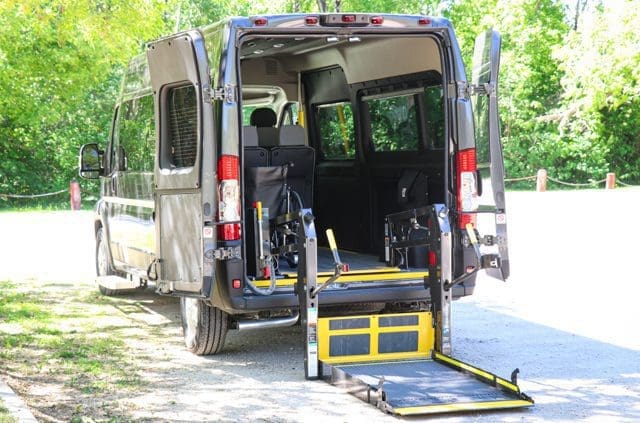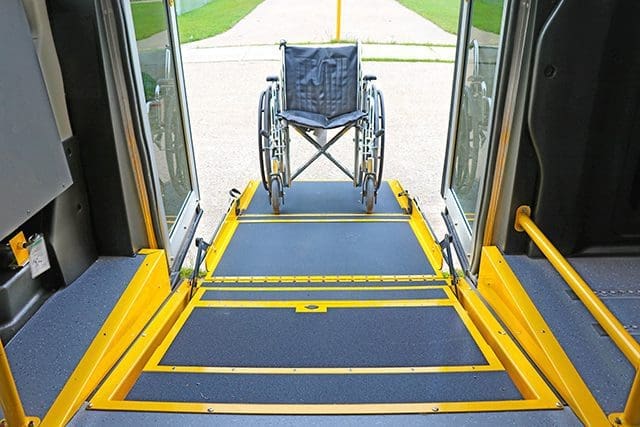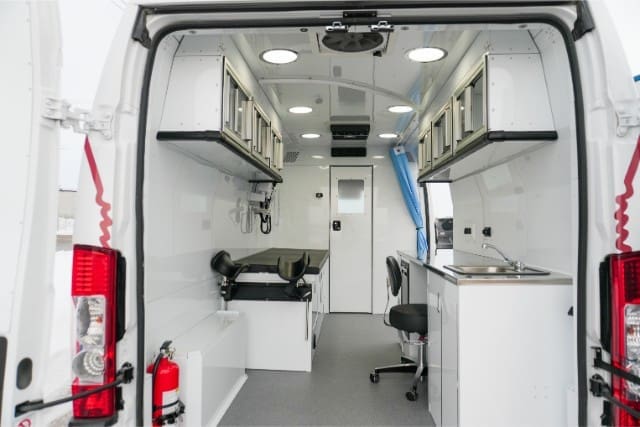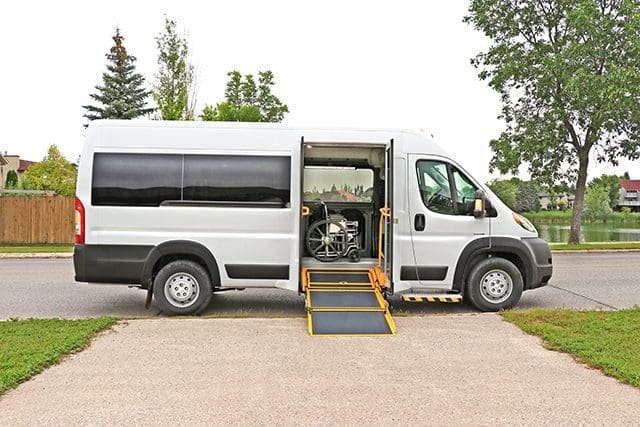There are several challenges that make it difficult to reuse equipment in wheelchair vans, which is why many organizations don’t do it. One challenge is incompatibility, meaning that the equipment from one van may not work properly with another van. Another challenge is the risk of the equipment breaking down, which can be dangerous. When equipment is reused, there’s also a chance that it won’t work as well as it should, losing some of its functionality.
Moreover, using reused equipment may not come with a warranty, so if something goes wrong, it may be costly to fix or replace. On top of all that, there are legal risks involved with reused equipment. The biggest concern, though, is safety. If the equipment fails while the van is in use, it can lead to injuries for the operator and passengers inside.
At MoveMobility, we know a lot about wheelchair vans because we make them. Some companies like to reuse electrical systems to power wheelchair lifts and ramps, while others like to reuse equipment like fasteners. We believe it’s better to avoid reusing equipment in these vans.
In this blog post, we’ll talk about reusing equipment in wheelchair vans. We’ll look at the safety concerns and cost issues that come with it. Then, we’ll leave you with some recommendations.
Why Avoid Reuse of Equipment in Wheelchair Vans?
There are several reasons why reusing equipment in wheelchair vans should be avoided.
Compatibility issues
Not every wheelchair van has the same specifications and dimensions. This makes it difficult to fit and install reused equipment properly. In addition, there are compatibility issues with existing equipment and a new vehicle’s design. This can result in a poor fit and will compromise its use. For example, if an old vehicle chassis is not perfectly matched with a new vehicle, a lift or ramp won’t fit properly.
Risk of equipment failure
Reusing lifts, ramps, wheelchair securement systems, and electrical components is risky. The more wear and tear there is on these parts, the higher the chances of the equipment breaking down while it’s being used.
Two common issues that contribute to this are compromised wiring and corroded fasteners. Compromised wiring means the wires might have been damaged or have their protective covering worn off. You can tell if the wiring is compromised if you see exposed or damaged insulation around the wires.
On another note, corroded fasteners are like screws or bolts, and you can tell they’re corroded if you see rust or a powdery substance around them. These issues make it more likely for the equipment to stop working properly, and that’s dangerous because it can put everyone in the wheelchair van at risk.
Functionality
Using old equipment in a new vehicle can cause issues due to technical limitations. It’s kind of like trying to fit something into a place where it doesn’t belong, like a square peg into a round hole. The reason is that new vans have different technology compared to older ones. So, if you salvage switches and connectors from the old equipment to use in the new vehicle, it can cause problems. It’s better to use equipment that is specifically made for the new vehicles to avoid these issues altogether.
Warranty
Reusing equipment voids the manufacturer’s warranty and leaves the owner responsible for any repairs or replacement costs to the wheelchair van. Liability risks are also a major concern that can arise from using equipment that doesn’t meet current safety standards.
Safety concerns
The safety of your clients in wheelchair vans is super important. Remember when we talked about wiring problems and corroded fasteners? Those can actually make some of the equipment not work properly. And when the equipment doesn’t work right, it can put the people in the van at risk.
For example, if the equipment is defective, airbags might not work during a crash, or seat belts might not keep people secure, which can be really dangerous.
So, it’s all about making sure everything is in good condition and works like it should to keep everyone safe in the wheelchair van.
Financial Implications of Reusing Equipment in Wheelchair Vans
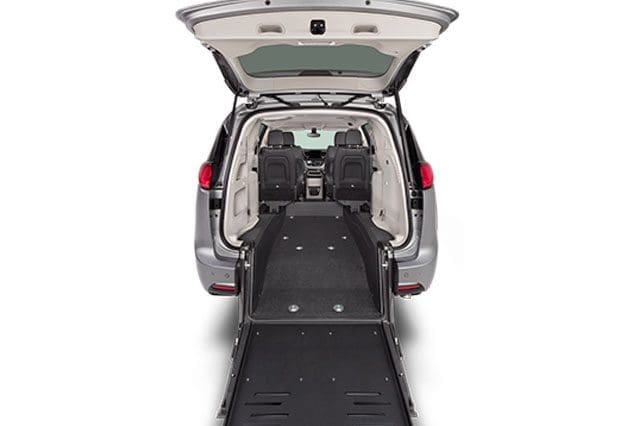
It’s important to consider the financial side of things when deciding whether to reuse equipment in wheelchair vans. Let’s take a closer look at what they are.
Extensive Removal, Refurbishment, and Reinstallation Costs
Reusing equipment in wheelchair vans is a labour-intensive process. First, you have to remove the used equipment from one vehicle. Then, you need to refurbish it before finally reinstalling it into a new vehicle. This process is time-consuming and requires a lot of effort and expertise. As a result, it can be very expensive because of the costs involved with proper installation and making sure everything works as it should.
Balancing Risks and Cost Savings
While reusing equipment may save money upfront, we have to think about the risks involved. If the equipment is worn out or has problems, it could fail and cause injuries. This could lead to even bigger costs due to liability.
Reduced Resale Value of the Existing Vehicle
If you put reused equipment in a new van, it might make the old van less valuable when you want to sell it. Buyers prefer vans with newer equipment that works well.
Outsourcing Costs
Most organizations don’t have the ability to modify wheelchair vans on their own. Because of that, it means paying a mobility equipment company for the service. If you can’t do the removal and reinstallation work yourself, you’ll need to send both the existing van and the new van to a specialized vendor. This adds extra costs to the process.
For more information on the financial side of wheelchair vans, check out our article on the costs of owning a wheelchair van for 1 year and the costs involved in purchasing a wheelchair van. Alternatively, check out the video below.
Technical challenges of the reuse of equipment in wheelchair vans
Reusing equipment in wheelchair vans can be tricky because of some technical challenges. Let’s take a look at these obstacles.
Mixing and matching
When you try to mix and match parts from different model years, it can cause problems. For example, if the new chassis doesn’t match the existing one, it can affect how well the vehicle performs. This means you’d need to make big changes to make everything fit together, and that can make the whole project more expensive.
So, it’s like trying to put puzzle pieces from different sets together. They might not fit perfectly, and you’d have to make a lot of adjustments. And those adjustments can cost you more money. It’s important to think about these things when you’re working on a project like this.
Incompatible wiring and components
When it comes to the powered equipment in wheelchair vans, it’s usually connected directly to the vehicle’s wiring. Taking out the connectors, switches, and wiring without causing damage is really tricky. The problem is that different manufacturers use different wiring setups, so it’s hard to put everything together without running into issues. This means you have to make more changes to make everything fit together.
Chassis modifications
A lot of wheelchair ramps are installed with extensive modifications to the vehicle chassis. When ramps are removed from the vehicle, the ramps aren’t roadworthy if the future intention was to resell or trade in the van. Newer vans won’t be able to safely accommodate the reused ramp without major vehicle modifications. These modifications can also increase the labour costs of the project.
These technical challenges and compatibility issues make it hard to reuse equipment in wheelchair vans. Customizations are often needed, and even then, there could be a loss of functionality. It’s important to carefully consider these factors and explore other options that ensure a good fit, proper functioning, and compliance with safety standards.
Impact of Lifespan and Durability on Reusing Equipment in Wheelchair Vans
Another factor to consider in reusing equipment in wheelchair vans is the durability and lifespan of the equipment itself. The lifespan of the equipment in wheelchair vans usually matches the lifespan of the vehicle it was originally installed in. Once the wheelchair van starts to become old and worn out, the equipment is already in a similar condition.
For that reason, it doesn’t make sense to be reusing old equipment in newer wheelchair vans. Unless the equipment is barely used and in as good or better shape than the new vehicle it’s being installed in, it’s not suitable for reuse.
Recommendations for Reusing Equipment in Wheelchair Vans

Safety is the number one priority when it comes to wheelchair van equipment. As we mentioned earlier, we at MoveMobility always recommend against reusing equipment. You’ll avoid safety risks, compatibility issues, and other complications. It’s best to consult with professionals when you’re looking into wheelchair van modifications.
If you already have a wheelchair van with reused equipment in it, consider the following:
Compliance: Verify that the reused equipment meets all applicable safety standards and regulations. Make sure that the installation adheres to the manufacturer’s guidelines and recommendations.
Ongoing maintenance: Establish a regular maintenance schedule to keep the reused equipment in good condition. Monitor its performance over time and address any issues right away to prevent potential safety risks.
Consider new equipment options: It’s always recommended to consider new equipment instead of old. New equipment works work better, keeps you safer, and comes with a warranty to cover any issues. It’s like getting a brand-new toy that you know will work great and if anything goes wrong, you’re covered. So, instead of using used equipment that might have wear and tear, think about exploring new options for better performance and peace of mind.
Exploring new equipment options will provide better performance, safety, and warranty coverage than reused equipment.
Final Thoughts on Reusing Equipment in Wheelchair Vans
As you can see, the key takeaway to consider with the reuse of equipment in wheelchair vans revolves around safety. While reused equipment may save a few bucks in the short term, it’s never worth the risk of compromising the safety of both the operator and passengers.
If you’re in the research process of finding a new wheelchair van, take a look at these articles:
- How to Choose a Wheelchair Van (11 Steps)
- Rear Entry vs. Side Entry Full-Size Wheelchair Vans (Pros & Cons)
- What Kind of License Do You Need to Drive a Wheelchair Van in Canada?


